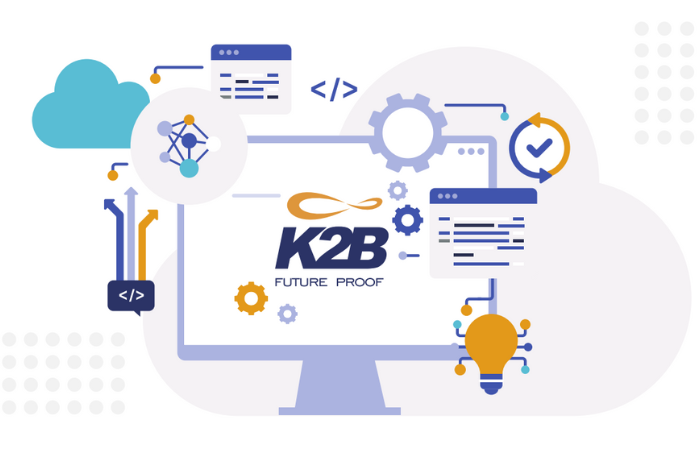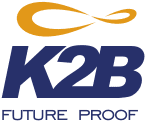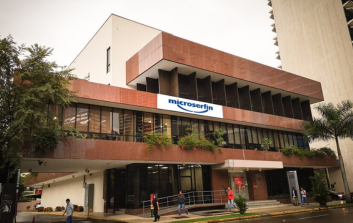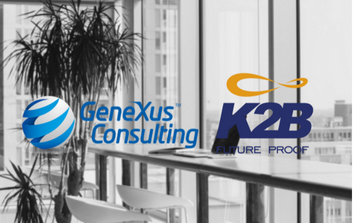There is no question that automating some processes and procedures of a financial institution’s administrative management simplifies control and decision-making. While it is true that a bank’s revenues are managed by the core banking and business support systems, adopting an ERP system is important for controlling and managing the costs associated with the bank’s general operations.
Normally, the bank’s operational management costs are incurred by handling suppliers / purchases / contracts / human resources / asset management, which, though they represent a small portion of the institution’s income statement, are important factors to be taken into account.
On the other hand, an ERP system not only is a crucial support tool for operational management but for the business’ supporting systems, making it easier to record relevant information for better decision-making. Therefore, an ERP must be easily integrated and interact naturally with the rest of the systems.
Walter Lipskind, Project Manager at K2B, analyzes the importance and benefits of having an ERP specially designed for banks, allowing the institution to obtain maximum profitability.
Which arguments support the incorporation of an ERP?
As we have already seen, an ERP is a critical system for the banking system’s core, but it is not necessarily considered the heart of it. As such, it manages highly important costs for the institution. This includes, for example, the management of purchases, suppliers and human resources, which are relevant elements to keep in mind since they are, ultimately, the bank’s image.
Incorporating an ERP solution poses a challenge for the organization, but it is also a necessity. Let’s take a look at some of the benefits that financial institutions obtain by automating processes.
1. Future Proof
The evolution of the ERP is a fundamental aspect when working with it. We must be able to quickly make the necessary changes in the system to maintain the institution’s operations.
Basically, ERPs are systems in constant evolution. This means that new versions of the solution are constantly being released, adding new features and integrations. This point is key when selecting a tool for our organization.
When we think of ERP, we should not see it as just another piece of software, but as an integral management platform. Within the financial sector, it is mandatory to comply with the latest regulatory and tax requirements, therefore, it is essential to work with an updated tool.
As a matter of fact, those organizations that keep up with the wave of technological innovation have a much better chance of growth and differentiation from the competition. Hence, an ERP that is continuously being updated and launching new versions of the tool is a must.
Moreover, implementing an ERP and its components is a time-consuming and resource-intensive process. Therefore, we must think in a medium to long term time horizon for its implementation and use, so planning must be very well done.
It is important to note that a tool version change should not imply the same effort and investment as a new implementation. That is why the financial institution should previously validate the experience of technological upgrades with other companies. The most significant thing is not to turn every ERP upgrade into a new project. The simpler the process, the more effective the benefit for the organization.
A last point to consider is the option of adding extra functions to the ERP. In other words, if we have many customizations and developments applied to the solution, that may affect its upgrade. Consequently, K2B recommends setting up a work plan to minimize costs and processes.
2. Autonomy and Flexibility
An ERP consists of multiple modules, which allow you to implement the ones you need at any given time. In addition, you can create or integrate other modules or capabilities as you need them.
As a result of this feature, we have dedicated solutions for each area, such as purchasing, stock management, accounts payable, planning, and accounting. This way, we can decide what scope we want the ERP to have in the future, and we can plan to eventually incorporate more modules. Additionally, this allows us to adjust the company’s costs and needs. If the organization is not prepared for the impact of implementing a complete system, we can consider a progressive deployment.
Another important feature for a good ERP is to be highly configurable. In other words, they are designed to be easily adapted to different companies. In order to meet this goal, the implementation plan must include resource training. Courses, technical talks, and training tools are essential for ensuring this point is achieved.
In the process of transferring knowledge, we should aim to ensure that the institution’s management team understands the solution the same way the developing company does. In other words, they must understand how to solve specific problems and how to adapt different processes to each function. Also, they need to understand the best way to take advantage of the platform’s capabilities.
Organizations often overlook autonomy, but it is important to consider it because of its many benefits. Simple things, for instance, can sometimes be fixed without requiring a two-tier upgrade. Good implementation training can help the team understand how to adapt to legal changes, like new taxes or withholding taxes. In order to make these adjustments, the institution must have the organizational capacity to do so without requiring specialized resources (with their high costs) or new developments.
3. Process efficiency and consistency
A third factor to consider when implementing ERP is efficiency, which means taking process consistency and integrity into account.
It is the concept of how ERPs work that makes the solution stand out. The advantage of this type of software is that it is able to record all the information needed for a specific action to be performed at a given time. Then, as the process develops, we incorporate more data. This is a huge benefit, and it provides the integrity we are looking for.
Rather than having two separate areas for loading and entering information, everything is now consolidated. In this way, we are able to perform more detailed control in less time. Why? Because we will avoid double registration, reduce work time, and reduce personnel requirements. In particular, we are no longer required to have multiple departments for different functions, but instead, we can unify criteria and processes across them.
Collaboration is essential at this point. If the invoice is not registered by the person who receives it, the next step is void. Consequently, we need a comprehensive understanding of the company’s operations, with fluid and interconnected communication.
On the other hand, ERP benefits internal controls, as it simplifies and improves their implementation. This happens because the tool incorporates these steps and performs them automatically each time. The same data no longer needs to be recorded twice or three times, or in three different locations. As a result of ERP, we are able to simplify the application of controls, which reduces costs. This allows us to focus on the right things, rather than wasting time on useless activities.

Our decision-making is also improved by having all the information in one place, in real time. The use of ERP will simplify the centralized and unified management of information, enabling instant access to it.
Another key advantage of ERP is its control and traceability, which allows us to detect errors as well as routine tasks.
For instance, processes can be automated, especially the most repetitive and costly ones that are handled manually, such as invoices, vouchers, and orders, so that the human team can concentrate on more productive tasks. Having a financial solution helps to reduce team workload by automating clearly quantifiable activities.
Finally, ERP adoption brings other outstanding benefits, including a significant reduction in paper use since electronic file solutions can be implemented. It also enables integrating and implementing remote work. Regardless of location, knowing the status of payment or collection, as well as the data of the invoice issued, at any time, around the clock, is essential.
4. Paperless
Going paperless for better document handling has a direct impact on the efficiency of management and customer service.
Having a comprehensive document management and centralisation system that adapts to the reality of each organisation makes electronic document management possible, understood as a corporate and transversal process. The intelligent digitisation of documents, capturing, storing and indexing data, allows the automation of flows, the reduction of manual processes and the optimisation of time.
But not only the optimisation of document processes is achieved, but also the standardisation of all documentation through the definition of electronic templates in the system electronic templates in the system.
5. Integrated System
A few years ago, most companies typically had separate systems for accounts payable, inventory, etc. But the evolution of ERP and the implementation of cloud solutions created a whole new world.
Today it is impossible to think about the growth of my company without investing in a tool that allows me to interact actively with the rest of the organization’s systems.
Currently, ERP is being redefined, for multiple reasons. However, cloudification has dramatically changed product offerings, focusing on value-based systems that interoperate.
Therefore, ERP systems are integrated with all types of business verticals, such as core banking, loans, and investment systems, as well as sales and collections. Additionally, modern ERPs have built-in CRMs that manage customer relationships, communication channels, payroll, travel expenses and everything related to human resources.
Moreover, a good management solution brings dialogue tools with social networks and internal chats. It is a very broad platform that creates an entire company ecosystem. In short, interoperability with other cloud-based software is becoming increasingly important.
On the other hand, ERP allows interaction and enables business growth. In the financial sector, companies can establish new product lines by building a client protfolio. There is an increasing number of banks offering insurance, for instance. So, commissions, collections, and everything else related to selling the product are all data that must be recorded, as part of a successful business management system.
Evidently, the bank’s different vertical modules interact heavily. However, the institution must keep a record of guarantees delivered, and the relationship with the client, etc. Previously, these data were kept separately, but now they can be unified, simplifying and making operations easier to control.
A similar example can be found in the ATM and POS rental business, where strong interoperability with fixed asset management is imperative. In other words, not only is it necessary to identify the location of each ATM but also all the costs associated with its maintenance and customer billing. ERPs easily integrate this task into the solution as a natural part of the process.
Another example is guarantee management and everything related to it, where interaction with other systems to register and manage collection flows is key. We also highlight the natural connection between ERPs and electronic invoices.
6. Experience
Clearly, a financial institution’s funds are derived from sales; therefore, it is very important to have the ability to manage all operating costs.
Numerically, one might think that the funds registered through ERP are not the driving force behind the bank. As a matter of fact, all supplier, contract, and human resource management must be systematized and organized; otherwise, it becomes a major issue and a huge cost for the organization. The matter is not only economic but involves the institution’s image as well.
In other words, not paying an invoice because we are unaware of it damages the bank’s reputation. The same happens inside the company when information is not cross-checked, which results in poor project management. One of the most important functions of an ERP is to support a bank’s operational management.
In conclusion, ERP is a critical support tool for banking operations. In addition to providing transparency to tasks, it also simplifies efficient process management. This is a platform that works in collaboration with multiple applications and uses, allowing cross-referencing of information that is essential to the growth of the organization. There is a great deal of change and dynamism in today’s market, which implies the need for institutions to be prepared for such a challenge.







